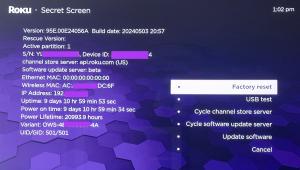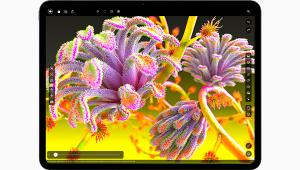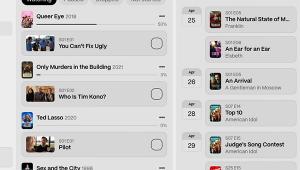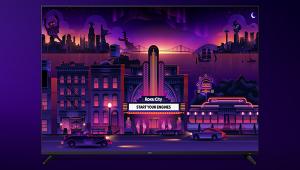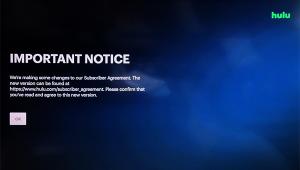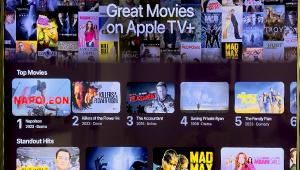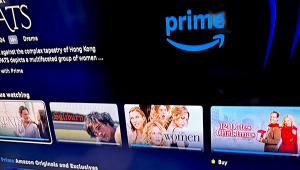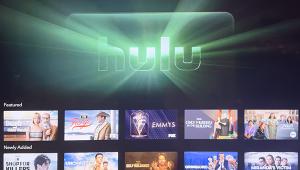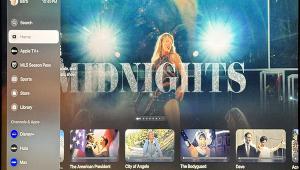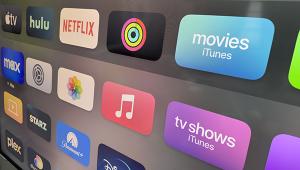Streaming Tech Roundup 2013

Google made Chromecast available for pre-order and sold out in less than 24 hours. At $35 (or less), it is the least expensive and possibly easiest way to stream Netflix, YouTube, HuluPlus, HBO Go, and a number of other apps to a TV. Simply tap the Chromecast icon in the compatible Android, iPad or iPhone app, and the video or music starts playing on the Chromecast. The dongle’s HDMI-CEC control can turn on your whole home theater and even switch to the correct input when a video is streamed to it. Streaming services are being added quarterly, and we can expect the number of partner apps to climb in 2014.
Miracast—Android's equivalent of Apple’s AirPlay—became available on more devices and has become a viable choice for streaming content by mirroring Android smartphones and tablets (or PCs running Windows 8.1) to TVs, media players, and adapters. Videos, music, slideshows, simple games—anything that displays on the mobile screen—can be experienced on a big TV screen. In 2013, AirPlay became available in more AV receivers, portable speakers, music players, and on a Google TV app. With the tap of an icon, music and movies are sent to your home theater or to a player in any room of your house.
Google TV and the Xbox One integrated streaming and live TV in a move toward consolidating entertainment in one device. Google TV activated a global search feature that displays results from online services and connected cable/satellite/telco TV and introduced voice search for finding movies by saying a genre like “gangster movies” or giving a brief description such as “love stories set at sea.” Android introduced apps, including AVia, for making media saved on a computer available to the home network, and PlayOn and Plex for streaming content from a computer to Google TV and allowing access to network TV and services like Hulu Plus that had been “blocked.” There have been rumors that Google TV will morph into “Android TV” or “Nexus TV.” Once concrete information is available, we will be sure to pass it along.
Microsoft introduced Xbox One with integrated live TV and online streaming. While still a powerful gaming machine, Microsoft wants the Xbox One to be the “all-in-one entertainment device.” To that end, it plays Blu-ray discs and DVDs, accepts streams from computer media libraries using the Play To feature, and integrates with cable, satellite, and telco TV. Bing program searches now include traditional TV times and all content can be accessed and controlled by voice or gesture using the improved Kinect high-definition camera, which can “see” in the dark and recognize multiple users.
Netflix, Hulu, Amazon, and other streaming services took on traditional TV by producing their own TV series. Some were spinoffs from TV programs such as Arrested Development. Others were original series with high production values. House of Cards garnered many of Netflix’s 14 Emmy nominations, with David Fincher winning for Outstanding Directing for a Drama Series. The comedy series Arrested Development also won for and outstanding directing. Netflix’s choice to make a whole season available at once, encouraged binge viewing; a Nielsen survey revealed that 94% of viewers watched episodes in succession or watched one or two episodes every few days.
The availability of more high-definition streams with 7.1 digital surround sound spotlighted the need for faster Internet speeds and high-bandwidth routers to ensure smooth video. Responding to the call, more manufacturers introduced 802.11AC routers that can be paired with an AC bridge. Simple dashboards and mobile apps made it easier to set up routers to prioritize high definition video streaming and USB connections made it possible to turn a hard drive into a media server that is able to stream to devices when you are away from home.
More cloud services were launched in 2013, providing more options for streaming to home and mobile devices. Although many scoffed at the UltraViolet online movie locker, the service continued to grow and is now available through Vudu, Cinema Now, Flixster, M-Go, and others. It has also become easier to add titles that you own on DVD as Cinema Now and Walmart introduced computer software that authorizes DVD titles directly from your computer. While I have added a few dozen titles to my locker, there is still the caveat that some titles may become unavailable in the future. I, for one, will keep my DVD and Blu-ray library in storage unit until I have a bit more confidence in UltraViolet.
Finally, 2013 was the year that iTunes Radio went live and allowed free streaming from the iTunes music library. The Spotify music service expanded from free “radio” stations on mobile devices to free albums that could be played as long as the music was “shuffled” and not played on demand. Google Play Music became one of the most flexible services, allowing users to save a radio station to a playlist.
Google Play Music, the Chromecast, and the Xbox One were a few of my favorite streaming innovations of 2013. What are your favorites?
- Log in or register to post comments

